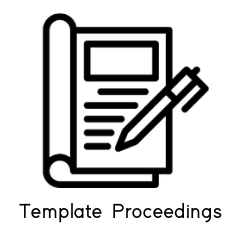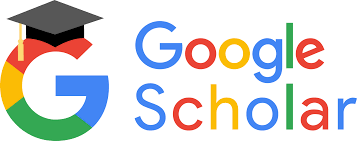Development of an Authentic Self-Assessment Instrument to Measure Employability Skills and Science Literacy of High School Students in North Aceh
DOI:
https://doi.org/10.29103/micoms.v3i.203Keywords:
authentic self, assessment, employability, skills, scientific, literacyAbstract
The independent curriculum implemented at the elementary to higher education level currently hopes to produce a superior generation. Employability Skills and Scientific Literacy are two things must be possessed by superior human resources. In order to measure these two abilities, an appropriate instrument is needed, such as authentic self-assessment. This study aims to develop an authentic self-assessment to measure the Employability Skills and Scientific Literacy of high school students. This research is a development research using 4D design (Define, Design, Develop, and Disseminate). The instruments used were validity and response questionnaires filled in by expert lecturers and senior teachers at the school. The results of this study are: a) the authentic self-assessment instrument measures Employability Skills - the average is in the high category and the response is very good and b) the authentic self-assessment instrument measures students' scientific literacy - the average is in the high category and the response is very good.
References
R. H. Mardhiyah, S. N. F. Aldriani, F. Chitta, dan M. R. Zulfikar, “Pentingnya Keterampilan Belajar di Abad 21 sebagai Tuntutan dalam Pengembangan Sumber Daya Manusia,” Lect. J. Pendidik., vol. 12, no. 1, hal. 29–40, 2021, doi: https://doi.org/10.31849/lectura.v12i1.5813.
R. Vhalery, A. M. Setyastanto, dan A. W. Leksono, “Kurikulum Merdeka Belajar Kampus Merdeka: Sebuah Kajian Literatur,” Res. Dev. J. Educ., vol. 8, no. 1, hal. 185, 2022, doi: 10.30998/rdje.v8i1.11718.
Y. Ismawati, A. Rahmah, M. N. Fathi, R. Jamaliyah, A. L. Rahmadani, dan N. Arfinanti, “Budaya Organisasi Sekolah Dalam Mempersiapkan Sumber Daya Manusia Unggul,” Jurna Adm. dan Manaj. Pendidik., vol. 3, no. 2, hal. 118–122, 2020, doi: http://dx.doi.org/10.17977/um027v3i22020p118.
H. Sakdiah dan M. Jamilah, “Digital Literacy Students Facing To Independent Learning Independet Campus Curriculum,” Community Med. Educ. J., vol. 3, no. 1, hal. 217–222, 2022, [Daring]. Tersedia pada: https://www.hmpublisher.com/index.php/CMEJ/article/view/180/237
M. Suryaman, “Orientasi Pengembangan Kurikulum Merdeka Belajar,” in Seminar Nasional Pendidikan Bahasa dan Sastra, 2020, hal. 13–28.
Sunardi dan Hasanuddin, “Pengembangan Employability Skill Mahasiswa Vokasi Melalui Pembelajaran Stem-Project Based Learning,” SemanTECH, vol. 3, no. 4, hal. 210–217, 2019.
Overtoom, “Employability Skills: An Update,” 2000.
J. P. Robinson, “What are Employability Skills,” Alabama Coop. Ext. Syst., vol. 1, no. 3, hal. 1–3, 2000.
L. Widayoko, A., Latifah, E., & Yuliati, “Peningkatan Kompetensi Literasi Sains Siswa SMA dengan Bahan Ajar Terintegrasi STEM pada Materi Impuls dan Momentum,” J. Pendidik. Teor. Penelitian, dan Pengemb., vol. 3, no. 11, hal. 1463–1467, 2018.
S. A. Britton, E. D., & Schneider, “Large-scale assessments in science education.,” in In Handbook of Research on Science Education., 2014. doi: https://doi.org/10.4324/9780203097267.
H. et al Fives, “Developing a measure of scientific literacy for middle school students.,” Sci. Educ., vol. 98, no. 4, hal. 549–580, 2014.
L. P. Marhaeni, A.A.I.N. & Artini, “Asesmen Autentik dan Pendidikan Bermakna: Implementasi Kurikulum 2013,” J. Pendidik. Indones., vol. 4, no. 1, hal. 499–511, 2015.
L. R. Brown, G. T. L., & Harris, “Student self-assessment. CA: Sage,” in J. H. McMillan (Ed.) The Sage handbook of research on classroom assessment, Thousand Oaks, CA: Sage, 2013, hal. 367–393.
S. Arikunto, Dasar-dasar Evaluasi Pendidikan. Jakarta: Bumi Aksara, 2021.
Sugiyono, Metode Penelitian Kuantitatif Kualitatif dan R&B. Bandung: Alfabeta, 2012.
I. M. Suarta, N. S. Hardika, I. G. N. Sanjaya, dan I. W. B. Arjana, “Model Authentic Self-Assessment Dalam Pengembangan Employability Skills Mahasiswa Pendidikan Tinggi Vokasi,” J. Penelit. dan Eval. Pendidik., vol. 19, no. 1, hal. 46–57, 2015, doi: 10.21831/pep.v19i1.4555.
M. . Pellegrino, J.W., & Hilton, “Education for life and work: developing transferable knowledge and skills in the 21st century,” Washington, D.C.: National Academy of Sciences, 2012. http://www.nap.edu/catalog. php.
S. K. E. Novanti, E. Yulianti, dan V. R. Mustikasari, “Pengembangan Instrumen Tes Literasi Sains Siswa Smp Materi Tekanan Zat Dan Penerapannya Dalam Kehidupan Sehari-Hari,” J. Pembelajaran Sains, vol. 2, no. 2, hal. 7–12, 2018.
Downloads
Published
Issue
Section
License
Copyright (c) 2022 Agus Muliaman, Halimatus Sakdiah, Fajrul Wahdi Ginting, Najiha Sabirin, Zahara

This work is licensed under a Creative Commons Attribution-ShareAlike 4.0 International License.
COPYRIGHT NOTICE
Authors retain copyright and grant the journal right of first publication and this work is licensed under a Creative Commons Attribution-ShareAlike 4.0 that allows others to share the work with an acknowledgment of the work's authorship and initial publication in this journal.
All articles in this journal may be disseminated by listing valid sources and the title of the article should not be omitted. The content of the article is liable to the author.
Authors are able to enter into separate, additional contractual arrangements for the non-exclusive distribution of the journal's published version of the work (e.g., post it to an institutional repository or publish it in a book), with an acknowledgment of its initial publication in this journal.
Authors are permitted and encouraged to post their work online (e.g., in institutional repositories or on their website) prior to and during the submission process, as it can lead to productive exchanges, as well as earlier and greater citation of published work.
In the dissemination of articles, the author must declare https://proceedings.unimal.ac.id/micoms/index as the first party to publish the article.






